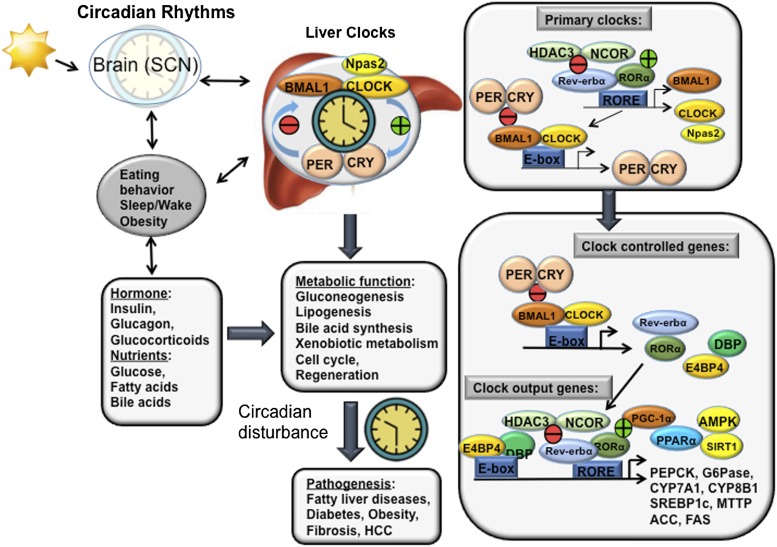Fig. 10.
Circadian rhythms in liver metabolism. The central clock in the SCN synchronizes with the peripheral clock to regulate liver metabolisms. Eating behavior, sleep/wake cycle, and obesity affect central clock and liver clock functions and their synchronization. Hormones such as insulin, glucagon, and glucocorticoids, and nutrients including glucose, fatty acids, and bile acids affect circadian rhythms and liver metabolism. Bmal1 and Clock are primary clock products that bind to the E-box sequences in the Per and Cry gene promoters. Per and Cry complexes inhibit the Bmal/Clock complex in a negative loop to inhibit Per and Cry transcription. Bmal1 and Clock (also Npas2) are regulated by a negative regulator Rev-erbα, and positive regulator RORα, which bind to the same ROR response element (RORE) in the promoters. Rev-erbα recruits HDAC3 and NcoR to inhibit gene transcription and ultimately the circadian rhythms of many CCGs, such as PEPCK and G6Pase in gluconeogenesis, CYP7A1 and CYP8B1 in bile acid synthesis, and SREBP-1c and MTTP in lipogenesis in the liver. Alteration in synchronization of the central clock and liver clock contributes to the pathogenesis of fatty liver diseases, diabetes, and obesity, as well as fibrosis and hepatocellular carcinoma. HCC, hepatocellular carcinoma; MTTP, microsomal triglyceride transfer protein; NCOR, nuclear receptor corepressor; SCN, suprachiasmatic nucleus.

